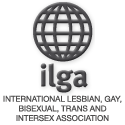In January of this year Nepal officially recognized a third gender category on citizenship documents. Local media lauded the government for recognizing the rights of sexual and gender minorities in the post-war fledgling republic, home to one of the most successful LGBT rights movements in the world.
However despite this spike in attention, the reports glossed over the 12 years of activism it took to get to this point, and the bureaucratic snags that remain. And in doing so, the stories missed out on a discussion that LGBT activists around the world have recently begun to have more regularly – namely, how many genders are there? And how should we recognize them?
In Nepal, a third gender category first emerged legally in 2007 when a group of LGBT rights activists led by the director of the Blue Diamond Society, a Nepali NGO, won a case in the Supreme Court. The court decision mandated three things: that the government scrap all laws that discriminated on the basis of sexual orientation and gender identity, that they study and implement a same-sex marriage policy, and that citizens be allowed to self-identify as a third gender on all official documents and registers.
Since 2007, the third gender category has begun to appear on various documents – ranging from Himalayan trekking permits to voter registration forms, and even the 2011 federal census, which was heralded as the first such survey in the world to allow people to identify as a third gender.
But the process of introducing a third category has not been without snags.
For example, during census enumeration, the 40,000 school teachers charged with counting the country’s people set out to cities and villages across the country with a handbook that only listed two genders – male and female – despite the census form listing three.
“When they came to my house I knew I could register as third gender on the form so I told them that’s what I was,” said Sharon, a transgender woman in Rupendahi district.
“But they refused. They said there was no definition for that column so it wasn’t real. I fought with them but they said nasty things to me so eventually I just let them register me as a man,” she said.
Early this year, the Ministry of Home Affairs issued a directive instructing all district offices to allow citizenship certificates – an important document for Nepali citizens which allows them to access bank accounts, pensions, employment, and other documents such as passports.
But similar to the census enumeration process, bureaucratic hurdles remain.
“Many district offices have told our members who have gone to apply for new citizenship documents that they cannot get them,” explained Sunil Babu Pant, Blue Diamond Society’s director and, a former Member of Parliament, Asia’s first openly-gay federal-level politician.
The district officials claim that their instructions dictate that the must issue the documents, but the mandate does not specifically tell them to issue new documents to people who already have them.
“It’s more bureaucracy, more homophobia and transphobia coming out in a soft way,” Pant reacted.
The process of recognizing third gender categories on documents is not unique to Nepal, and activists have noted it as a good measure for protecting transgender people in high-security situations such as in airports and humanitarian emergencies. But no country has attempted to do it as comprehensively as the South Asian country of 27 million has attempted to do.
Australia and New Zealand both allow passports to be obtained with gender listed as M, F, or X – allowing citizens to select their gender on documents based solely on affidavit. India allows people to have passports stamped “E” for “Eunuch,” a controversial term used for some transgender people in South Asia.
Transgender activists in the Netherlands, according to a 2011 Human Rights Watch report, have been contemplating introducing a third intermediary gender category in an effort to protect transgender people as they undergo transition processes.
In Nepal, activists have pushed the government to use the word “other” on documents.
“It’s more inclusive than the original term, ‘third gender,’ that we were using,” explained Pant, who led discussions on terminology as he was lobbying the government to act on the court’s decision.
“We want to respect that gender identity is completely based on self-identification, and this term allows sexual and gender minorities to claim a broadly-defined identity,” he said.
The Blue Diamond Society plans to file another case in the Supreme Court this spring, arguing that the district officials’ narrow reading of the citizenship documents directive violates the court’s 2007 ruling on non-discrimination.
Source – dot429.c0m







